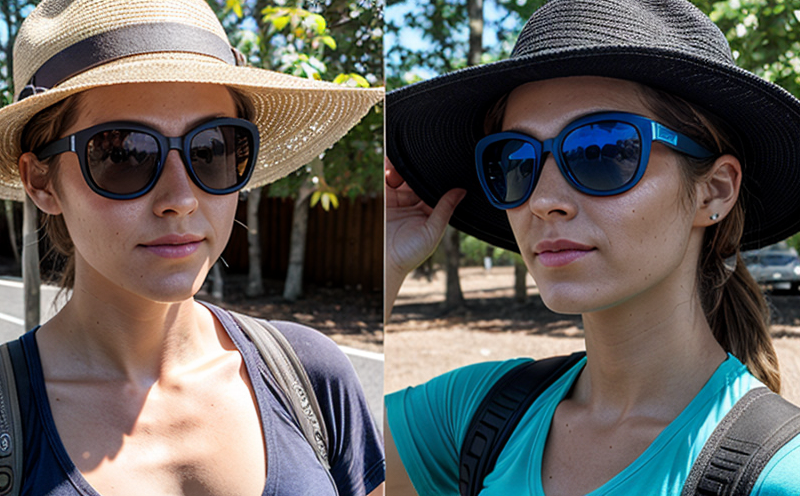BS 2724 Testing of protective clothing against UV radiation
The BS 2724 standard specifies a method for determining the ultraviolet (UV) protection factor of protective clothing. This service plays an integral role in ensuring that personal protective equipment (PPE) offers adequate UV protection, thereby safeguarding workers from harmful UV rays that can cause skin damage and increase the risk of skin cancer.
Testing under BS 2724 involves exposing a representative sample of the fabric to a controlled source of ultraviolet radiation. The intensity of the radiation is measured before and after the exposure period. A comparison between these intensities provides an indication of how effectively the material blocks UV light, which then determines its UV protection factor (UPF).
The testing process requires precise control over environmental conditions such as temperature, humidity, and the wavelength range of the ultraviolet radiation used. This ensures that the results are accurate and repeatable.
To perform this test, we use specialized equipment such as UV lamps or xenon arc lamps, which can simulate both UVA (320-400 nm) and UVB (280-320 nm) radiation. The specimens undergo a set exposure time in the controlled environment before measurement of their transmittance is conducted.
The testing process involves rigorous specimen preparation to ensure that the results are representative of real-world conditions. This includes ensuring the fabric's surface is clean and free from contaminants, as well as ensuring consistent moisture content. The samples must be cut to a standard size and shape before being exposed to the UV light source.
Once testing is complete, detailed reports are generated that provide comprehensive data on the UPF of each sample tested. These reports serve as an invaluable resource for quality managers, compliance officers, R&D engineers, and procurement teams responsible for selecting appropriate PPE.
The BS 2724 test not only helps in ensuring regulatory compliance but also plays a crucial role in enhancing worker safety by providing accurate data on the effectiveness of protective clothing against UV radiation. This information is essential for manufacturers to improve their products continuously and meet stringent quality standards set forth by various industries.
Benefits
The BS 2724 testing process offers numerous benefits to organizations involved in the production of protective clothing:
- Increased Worker Safety: By ensuring that the PPE meets stringent UPF requirements, this test enhances worker safety and health.
- Regulatory Compliance: This service helps organizations comply with international standards such as BS 2724, thereby avoiding potential legal issues.
- Product Quality Assurance: Accurate testing ensures that products meet the highest quality standards, improving customer satisfaction and brand reputation.
- Risk Management: By identifying any gaps in protection early on, this service allows for proactive risk management strategies to be implemented.
International Acceptance and Recognition
The BS 2724 standard is widely recognized and accepted internationally. It is used by organizations across various sectors including healthcare, construction, and manufacturing to ensure that their protective clothing provides adequate UV protection.
This test has been adopted in numerous countries around the world due to its reliability and accuracy. Organizations worldwide trust this service for its consistent results and comprehensive reporting capabilities.
Use Cases and Application Examples
| Use Case | Description |
|---|---|
| Hospital Staff Protection | Ensuring that hospital staff are protected from harmful UV radiation while working in high-risk environments. |
| Construction Workers | Protecting construction workers from prolonged exposure to UV light during outdoor tasks. |
| Outdoor Sports Personnel | Ensuring that sports personnel are safeguarded when participating in activities requiring extended time outdoors. |
| Emergency Services | Providing essential protection for emergency services personnel who work in high-risk environments exposed to UV radiation. |
| Use Case | Description |
|---|---|
| Retail Staff | Protecting retail staff from UV exposure while working outdoors or in environments with high levels of natural light. |
| Tourism Sector Workers | Ensuring that tourism sector workers are protected when performing tasks requiring extended time outdoors. |
| Agriculture and Farming Personnel | Providing essential protection for agriculture and farming personnel who work in high-risk environments exposed to UV radiation. |
| Outdoor Event Staff | Protecting outdoor event staff from harmful UV radiation while performing their duties outdoors. |





